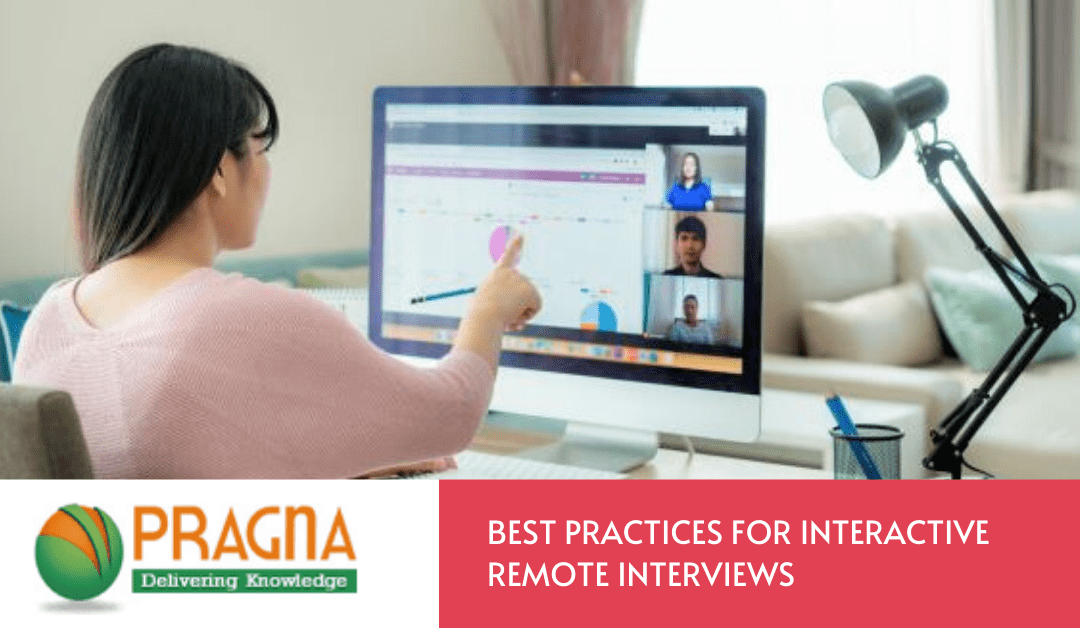
by Raghu Nandhan | Apr 16, 2020 | Blog, Company Insights
Over a period of time, employees’ preferences and requirements have evolved, and it is often challenging for companies to keep pace with. Employers are pounded with a great range of contemporary tips for keeping different generations of employees happy. But when it involves attracting and retaining best talent, employers should understand what employees actually need from an organization. While we all know that competitive pay package and great company benefits is one of the factor into an employee’s decision to consider a position at the company , there are many other important factors that are more important than a paycheck.
In order to, enjoy their jobs, employees must feel that their employers respect them and must be able to provide them with what they need to be successful in both their professional and private lives.
Below are some important lists of things to look for in a company:
Do the company’s values align with yours?
One of the key things to consider when researching potential employers is how their values align with yours. Because working for a company is lot more important than just spending time in a company. It’s about knowing and understanding that the company values some of the similar things (like honesty, integrity and hard work) and understanding how those values match up together with your own. You must feel that you simply and your potential employer represent similar things which you’ll build an enduring relationship.
Does the corporate culture suit your personality?
Many companies put cultural fit as the most necessary thing they look for when interviewing candidates and you must showcase this in your top priority list. for instance , if you’re comfortable in a more relaxed environment than a traditional one, then a company with a corporate culture won’t be a right fit you. Before you accept the provide letter, take the time to analyse how you’d fit in that company and how the company culture would suit you .
Are the team members people you’d like to work with?
Whether it’s a full-time job or an internship, you will be spending lot of your time together with your new co-workers, so it’s very crucial to make sure that they’re people you’d wish to work with. This goes concurrently with cultural fit and it’s something you must to remember when you considering a new opportunity. the average American spends around one-third of every weekday at work, so having co-workers you get along with might be a key a part of being happy at your job.
Will you be offered opportunities to learn?
Getting the chance to learn new things is key in any position, but it’s especially important during the beginning of your career. Therefore, finding an internship or full-time job that let you to find learn as much possible is vital in the event of your career.
The growth within the company?
Besides offering opportunities to learn about the industry, a great organization should also provide opportunities for growth within the organization. This is really important in the case of internships and full time entry level jobs because the opportunity for a promotion may be a great incentive to your career and prove your dedication to the team.
You to feel appreciated and valued?
When you feel appreciated at your workplace, it is another crucial part of your work life experience. Also it doesn’t necessarily mean that there should be a company-supported parties, happy hours or free lunches, it does mean that your employer should cause you to feel valued by offering positive feedback and encouraging your efforts to find out and improve.
Does the corporate offer security and stability?
Another important aspect of a company is that it can offer employees a secure and stable environment. This doesn’t mean that getting a regular monthly pay check in your account, but also a proven history of stable success and a sense of job security. However, it’s unrealistic to expect solid track record all the time, but good consistency in achieving growth and stats, shows that the company can provide you with the right kind of environment you like to succeed.
So, next time when you appear for an interview, you will be having dozens of answers ready to choose company rather than just pay check.




by Raghu Nandhan | Apr 14, 2020 | Blog, Offshore recruiter, Recruitment Technology
The Internet along with other technologies has made remote working a reality for employees and has completely revised the way businesses operate in the today’s modern world. But this change is also one of our greatest competitive strength. We can hire talented people from any part of the world.
We live in a connected world so, connected that we don’t even need to leave our comfort zones and still get the work done on fingertips. Modern day job seekers and businesses all over the world are adopting the same in the form of virtual teams.
So, before learning how to manage remote teams let’s first understand what it is?
Virtual teams are teams entirely consist of remote workers. A virtual team is a group of individuals or employees who are geographically scattered across different locations locally or globally and different time zones sharing information and cooperating in real-time using various technology tools like online communication, cloud applications etc. Managing virtual teams has its own set of challenges and benefits, but overall the benefits outweigh the difficulties.
Here are 7 strategies on how you can manage your virtual employees
Choose right communication tools
Communication is one of the top challenges for remote teams. It requires a plan to drive it. Since teams aren’t together in a co-located office, everyone needs to be dynamic in creating a communication schedule. Discussion that takes place in an office can sometimes be immensely helpful and productive, generating new ideas that might not have come to light in another context. Email, in particular, is a solid tool for conversation, Skype or Google Hangouts are great for quick instant messaging.
Virtual phone systems centered on cloud technology can be used for quick calling and task management. Also, Project management tools can help you keep your communication in a lot more organized manner and you can refer to it whenever you want. It also helps new people when they join, as they can refer the previously discussed points. Also using screen sharing tools like TeamViewer, Join.me etc. comes handy when you want multiple people to see the same screen in real time.
Promote remote team building
Remote team building won’t happen naturally and it’s not an overnight process, it requires constant efforts on your part as a virtual team manager, also from your team members. Some easy ideas for team building are a daily video standup, a weekly meeting where the team can share about their personal life along with professional thoughts like what they did over the vacation or weekend. Additionally, setting professional goals contributes to being systematic and puts people in the right mindset.
Track working hours
In a flexible environment, it’s becomes difficult for a manager to actually find out how many hours team members are working or even if they are working at all. In this case you need to track work hours by using software to make sure that your team members are working on the tasks at hand, few software can help you see what projects are being working on, which websites team members are visiting, applications being used, and even time spent working and time on breaks in real time.
Make expectations clear
Simply telling verbally someone to do a task is usually not the best way to go about managing teams. Put your expectations into writing exactly what you expect from your virtual employees including work deadlines, work hours, availability, and response times. Also include small details that are specific to your business which can cause trouble when working with virtual employees.
Build trust
It is important for the executive team to cultivate and encourage an environment of trust and give team members the benefit of the doubt. This should go without saying. Leaders are still bringing the idea that remote work does not mean less work. Build trust in your colleague’s by giving them space to speak openly to discuss individual ideas without ridicule or judgment.
Employees should feel comfortable while having conversations where they can be honest and frank with each other as this will help build strong relationships not matter which part of the globe they are located.
Over Communicate
More communication means more trust-building, less confusions and misunderstanding and better teamwork. Also, not to mention, it is one of the key components which adds to the broader success of the organization in long run. Effective communication can the solve the problem of many employees who feel isolated working outside the office.
The individual may overthink about the quality of their work judged or just feel out of the loop. While communication is essential for remote teams, overloaded information can quickly become a problem where no one understands anything.
Rewards & Recognition
Have you heard of the saying “no good deed should go unrewarded”. Make sure you set up a reward system to keep your team motivated and its better pinpoint the team members that can take on more responsibility. You do get up personally and praise your employees and probably pat on their back when they do something good. Remote employees work just as hard as employees based out at an office. And they need the occasional praises to stay motivated just as much, if not more.
With time teams are becoming more and more spry and less constricted to a physical location. Managing a remote team is fun and challenging at the same time. Ultimately it has proved to be rewarding for many companies across the globe. If you want to remember anything from this post, it is to bump in with your remote teams frequently, and make sure everyone gets the time they need. If you’re planning to build a virtual team, then keep the above tips in mind and arm the tools you need to be successful.




by Raghu Nandhan | Apr 10, 2020 | Blog, Recruitment Technology
We live in a connected world and with the advancement of technology in terms of social media it will more connected tomorrow. Social media is a valuable platform for any recruiter that acts as a wide source of information. Over the last few years social media recruiting has taken epic leaps. On an everyday basis recruiters are connecting to more and more people to find talent via social media. Social media allows companies to extend their reach to both active and passive candidates, meanwhile also build a community of followers.
Social media come handy when you want to find talent with niche skills. There is a scarcity of such talent in the market along with tough competition. So, to hire the right fit got to be real quick and Innovative and dynamic. But with all the positives recruiting on social is a time-consuming process which requires continuous dedication and patience.
But to help your search on social media and cut down time and efforts you have certain tools that will boost your hiring process. In this article we will unveil few such social media sourcing free tools and discuss how they can come handy.
ContactOut
Finding all the contact information and getting them to respond back to your connection invites is one of the most time-consuming aspects of recruiting. ContactOut is an application that asserts to be able to find double the number of contact details and email addresses as of LinkedIn. It also claims to unearth email addresses for three-fourth of the western world. ContactOut is a tool that can help you with the process of finding contact info of candidates in easy and quick way.
Connectifier
It is a tool built by a team from Google and Microsoft that develops machine learning-based searching to help recruiters and hiring managers. It comes with credentials and have partnered with LinkedIn. Connectifier integrate browser extension with a considerable database of candidates to provide recruiters with a large candidate research tool. It also has a ‘Auto-Search’ sidebar option which helps recruiters to find more information about candidates, including email addresses and phone numbers, thus making it easier to reach out.
TalentBin
TalentBin is a tool developed by Monster in known for aggregating all the relevant candidate info into one rich profile. Their algorithm gathers a range of social data thus giving you a complete backdrop on every candidate. With the help of TalentBin the whole process of candidate sourcing and outreaching becomes more effective and seamless.
It has the ability to source potential talent just by simply parsing a job description and it also highlights the mentioned skill set on the candidate’s profile. After you have found the right fit candidates, you can reach out to them by using any of the media mentioned on their profile like Email, Facebook, Twitter or LinkedIn. It also helps you craft a customized message template to fit according to the medium you have chosen to contact the candidate and also highlight the skills of your choice.
Gild
Gild accumulate information from around the Web to design a detailed candidate profiles for each of your job openings. It is dedicated on find talent through candidate search and scoring. Gild’s platform is built using on elements of predictive intelligence to help hiring managers find the right candidates for their company and make smarter hiring decisions.
Gild rates the candidates depending on their activity on social media, resume, personal website information and also by their published work. All the information is updated in the system automatically and is available to the users in no time. Recruiters can add or delete their notes and if the profile is already saved in the system a message will pop up summarizing the skills set, experience and also the previous notes.
Recruit’em
Google Search is a powerful tool to spot social profiles you’re looking for. But writing a query with more than five keywords can actually become messy which seems like a nightmare to type plus making type errors is so obvious which might not give you accurate results. Recruit’em can be your rescuer if you face the same problem. It allows users to input the skills and criteria they’re looking for and then creates the search query automatically. All you have to do is type your criteria including location, education, skills and keywords to exclude. It also allows you to pick the desired network for search like GitHub, Facebook, LI, Xing, Twitter etc. and Recruit’em handles the rest. You can even also save your searches to run again later. To add on as bonus, Recruit’em is completely free.
Final Thoughts
Social media sourcing is a time and resource-consuming process and lack of available candidates adds on to the frustration and struggle to fill open positions for employers. But happily, availability of bunch of candidate sourcing tools can make the whole process simpler by proactively identifying and assessing potential workers on social media.
Social media platforms can provide insights to a person life. But don’t forget an algorithm can make mistakes, recruiters should analyze the results before reaching out to candidates and not overly rely on insights from these tools.




by Raghu Nandhan | Apr 7, 2020 | Ace the Interview
With growing global health concerns regarding COVID-19, hundreds of companies have stopped their standard recruitment processes and opted for remote interviewing, sourcing, and screening. While this transition to remote interviewing may not affect all stages of the candidate funnel, it does impact the candidate experience directly. It shows that you as company care for employee’s health and is top of game with the changes happening due to viral spread of corona virus.
Not every role can be performed remotely, likewise not every candidate is suited for a remote work career. Conducting remote interviews may seem a bit stressful or scary if you’re new to it. Transitioning to an entirely virtual hiring process is not easy, also decision making becomes critical as finding candidate’s interest levels in-person through signals like body language is tricky. These are few internal aspects to consider but there are many other factors to check for like the candidate’s internet connection stability or candidate being familiar to tools which you will be utilizing to conduct interview.
If you have vigorous hiring targets to achieve this quarter, then don’t let this new trend-switch to remote work hold back your hiring efforts. Follow below steps to stay on track and deliver best candidate experience remote interviewing process.
Get hang of basic technical interviewing best practices
In today’s aggressive tech talent market, one blow or error during the process is enough to turn away interested candidates. While conducting remote interviews, it’s important that you are technically sound with basic technical interviewing practices. Being prepared for the remote interview not only guarantees the success of the interview but it also ensures your candidate that you’re prioritizing their interest in working as a remote member of your company. Remember, the key to conducting remote interviews is your tech choices.
Use a skills assessment test before connecting
You don’t want to waste your time connecting to everyone and conducting interview for all the applicants. Especially for high volume roles conducting skills assessment test will filter the number of applicants and help you quickly choose applicants that should move on to the video interview stage.
Connect with the candidate
After filtering it time to connect with candidates, first thing to communicate them clearly whether the interview will be a phone or video interview. Make sure the candidate understands this because no one will like to log into the interview and find that it’s a video interview, when they thought it was only by phone. While interviewing remotely, you won’t get the opportunity to create an in-person connection with the candidate so, it’s crucial that you stay connected to the candidate throughout the interview process.
This is why it is so important to value remote communication tools, not only with your active remote employees but also during the interview process as well. Don’t just stick to one communication tools, be adapt with different tools. Also, make sure to send across any software needed, along with instructions on how to download and set up the program. Some common programs which can be used are Google Hangouts, Skype, and GoToMeeting.
Create a distraction free remote interviewing environment
During remote interviewing, don’t leave any space for interruptions. To prevent Wi-Fi failure, get an ethernet cord and use a hardwired internet connection during interviews. To prevent any other online interruptions, put notifications from other apps on mute. Also, make sure that there is no source of bright light behind you as it makes it difficult for you to be seen on camera. Even though you cannot control candidate’s interview environment, it is considered best to send them an email prior advising them on how to take the interview in a distraction-free environment with stable internet connection.
Practice makes man perfect
This is just not a saying, if you don’t have expertise hiring remote workers, there is a possibility of some bug fixing in your remote hiring. Make sure your interviewing program is working properly. Also test your microphone level to ensure you are heard. Prepare few necessary interview question lists and run through them and practice it a few times.
Wrap it up
Working remote is exploding in popularity and now with the pandemic era it has become a necessity until things become normal. It is a proven fact that remote working boosts the flexibility and freedom of employees and employers alike. But learning how to steer through this new business model is difficult. Particularly, interviewing and hiring remote employees requires learning a new skill-set. Practicing the above discussed tips can help take your interviewing skills to the next level and put your best professional foot forward, and ultimately find the best candidate for your open position.




by Raghu Nandhan | Apr 7, 2020 | Blog, Company Insights
Most of the small business and start-ups don’t have time to focus their time and energy on employer branding. It is one of the most ignored and challenged that small businesses and start up face, as their journey of growth become competitive when they look out for high quality employees. Many of these small businesses and start-ups are struggling and competing to find same talent as much larger and well established organizations.
Taking the time to build a solid employer branding and recruitment strategy can play a significant role in a start-up’s success. Did you know that 23% of start-ups fail due to not having the right team? With strong employer brand it will be much easier to attract and hire the best candidates, which substantially improve your business outcomes. Below are some of the reasons why you should build out your employer brand.
Define a clear mission
Before you’ll build an employer brand, you would like to understand what your company represents. This indicates that what you would like to convey to people looking for job and the stakeholders.
Creating a mission statement will connect your team and working toward one common goal also to attract job seekers who believe in your objective or purpose. The core values of the company facilitate your team, understand the way to prioritize efforts and accomplish your mission. They’ll also additionally assist your team vet prospective candidates to envision if their values align with those of your team.
Both mission and core values are going to be guiding forces for your employer brand, thus it’s necessary to determine them early. Collect feedback from each one of your employee to make sure you’ve gained a majority agreement on how each is defined. Share your finalized versions together with your entire team so they’re on board and well prepared to support your efforts.
Define Your Company Culture
Company culture may be a bit harder to outline than your mission and values because there are many elements that make up culture. According to study, 46% of candidates say that a company’s culture plays a very crucial role in their decision to even apply for a position; it’s in employer interest to refine and communicate culture in branding efforts.
Additionally, startup culture in and of itself is completely different from that of larger organizations. There are only a few hurdles between the C-suite and individual contributors, as a result of many of us are juggling multiple roles. Together everybody plays an important role in creating the kind of company culture. For loads of job seekers, the conventional startup mentality of work hard, play hard is what attracts them to younger, unsystematic companies.
There’s no right or wrong culture, however take the time to outline and define it. This might strengthen your company in the long term and assist you in creating an employer brand that draws precisely the sorts of people you would like to on board.
By communicating your company culture through your employer branding efforts, leads to attract candidates which will increase your company culture.
Promote Your Vision
People wish to be a part of next great success of the company; but when you’re in the early stages, brand awareness will be an issue. It’s up to you to convey who you’re and how do you inspire job seekers to apply for open roles.
Roll out your short term and long-term goals in your employer branding and make candidates to get thrilled joining the company and keep candidates in the loop once your team hits milestones and as new candidates are part of.
Remain Transparent
For many of people stepping into startup is a daunting task. Because there may not be a guarantee of job security, also there could be expectations to spend long hours or the requirement to handle multiple projects.
Be honest and showcase this in branding materials and job descriptions on specifically what you would like and expect from the future staff. In this way, new hires won’t experience culture shock because of miscommunication during hiring process and eventually you’ll retain the good candidates that you put great efforts to attract.
Bring a light on the fun and wacky side of your culture and value proposition of employees by showcasing through photos of your team outings, workplace area and celebrations. Get folks excited once you reach milestones that bring you closer to achieving your mission.
Establish Your Employer Value Proposition
The employer value proposition (EVP), is analogous to the distinctive value proposition you utilize while pitching to customers and investors. The difference is that with an EVP you’re in fact that you concentrate on the employee experience, instead of the value of the product or service. Some startups will overpromise, which ends up in new hires leaving or quitting early, therefore try to avoid that.
Your value proposition could be different and that’s totally fine, just confirm that you’ve got one that’s well aligned together with your company.
Create a Strong Career Page
Potential candidates can review the web site to make their decisions/choices; therefore startup has to make sure that it includes a solid career page. For example if we look at Slack’s career page is so great, however there are other examples from smaller, less popular firms you must look into it.
Building a better employer brand for startup takes time, however if you focus to work on it.
At the beginning stage and when the cash flow starts the company will be in a better position to attract right candidates who will help you to take your company to new heights.
These entire recommendations and suggestions are just the beginning as you begin to establish your employer branding. Creating a better environment that has potential to attract high level talent is an ongoing process, that needs a commitment throughout the organization.




![]()
![]()
![]()



